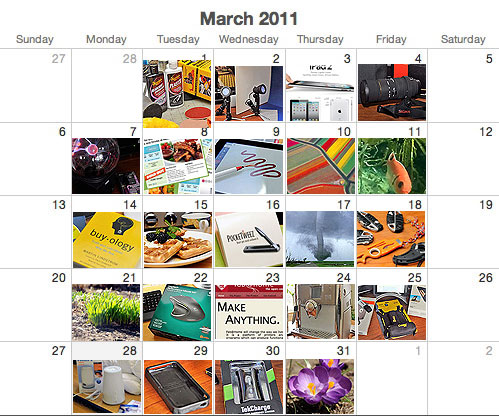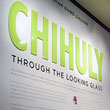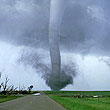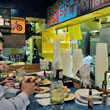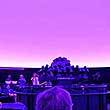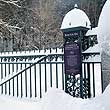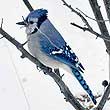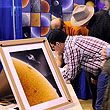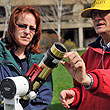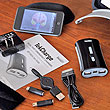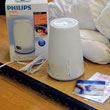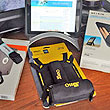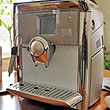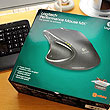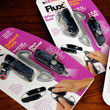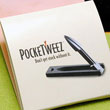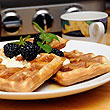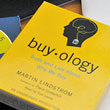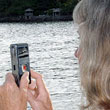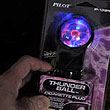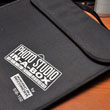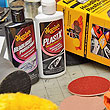This is the final installment of the 2011 NEAF Conference write-ups. It was our first time attending the Expo and it was excellent. We got to meet and chat with like-minded folks, listened to some interesting talks, and had plenty of hands-on time with all kinds of equipment. In this last post, we thought we would cover a few of the more unusual things we saw at the show.

We first came across Fullum-built telescopes last Summer at the World Science Festival om NYC, and were happy to come across them again at NEAF. By combining world class hand-made optics with awesome woodworking, Fullum telescopes turn heads whenever they appear. It is not surprising that Fullum scopes often claim the top prize at Stellafane and other telescope making competitions.

Not all the telescopes at NEAF were big. Those built by Barry Crist, for example, are tiny. They are also amazingly detailed. Some are models, some are functional, and all are works of art. With a 25% off sale at NEAF, we probably should have picked up a few.

Not all of the gear one needs (or wants) is readily available. This is often the case when one decides to modify their telescope (an 18" Obsession in this case). And once in a while, making one's own stuff can even lead to a business. This was the case with Roger Greenwood of Astrocrumb. Roger's focus is on filters; more specifically the FilterSlide. The FilterSlide is an obvious solution for anyone who has fumbled with screwing on filters. The rail setup enables the use to quickly and easily slide amongst different filters. Less fuss, more looking.
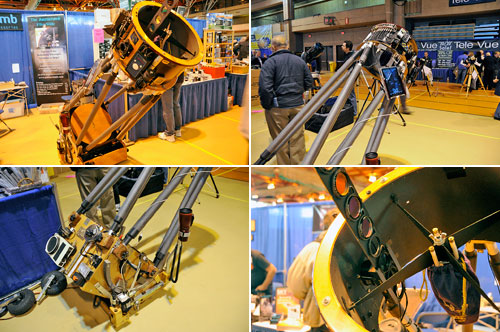
A few years ago we saw an ad from Starizona claiming that it was not necessary to spend hours taking an astrophoto. They claimed that they were able to do in minutes what would normally take hours. We were intrigued, and followed up with Starizona to see how they managed to bend the laws of time and space.

Starizona's secret is to shorten the path that light has to travel before hitting the camera. They are able to do this by replacing the secondary mirror of the SCT with a lens and and an imaging sensor. This effectively converts a f10 aperture to an f2. With lots more light hitting the CCD, the time required to get an image is drastically reduced. Brilliant.
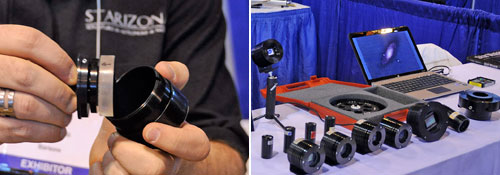
Of course, the Starizona HyperStar system will only work with a certain type of telescope: an SCT with a removable secondary mirror (Fastar from Celestron, certain types of Meade). The HyperStar lens can be used with astro cameras such as those from Starlight Xpress. The larger lenses (for SCT, greater than 9") can even be used with a DSLR. Now how cool is that?

The one last piece of equipment that ALL stargazers secretly wish for is their very own observatory. There were four vendors at NEAF selling personal observatories. They were similar, but differed in significant ways. The ExploraDome is a cover designed to fit on top of a variety of structures. The Pod from SkyShed is similar, but is a self standing structure. Its rotatable roof has optional bays for more storage space. We like the dome, but for those with a different esthetics, the folks at Urban Observatories will construct a turret from six to ten feet in diameter with the aperture size limited only by the base ring diameter. The last is the AstroHaven. It differs from the others in that it is a non-rotating fiberglass clam shell design.
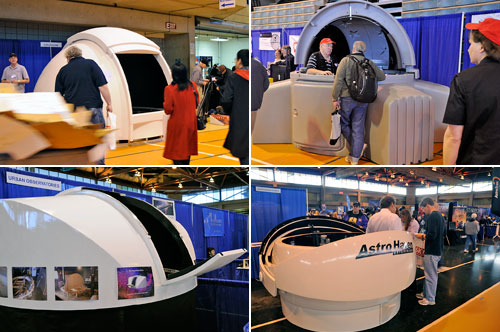
By this point it should be clear that amateur astronomers are willing to spend some serious money on their astro-gear. Many amateur astronomers don't get as much use out of their telescopes because of the time it takes to set up, cool down, and calibrate their apparatus before use. This means that if you have a big scope, a lot of planning needs to go into the chance of a night of observations. We live in New England and we totally understand the appeal of being able to just slide back the dome cover, point the scope to a spot in the sky, and start looking. Maybe someday... [Permalink] - NEAF 2011: Wrap up
|

